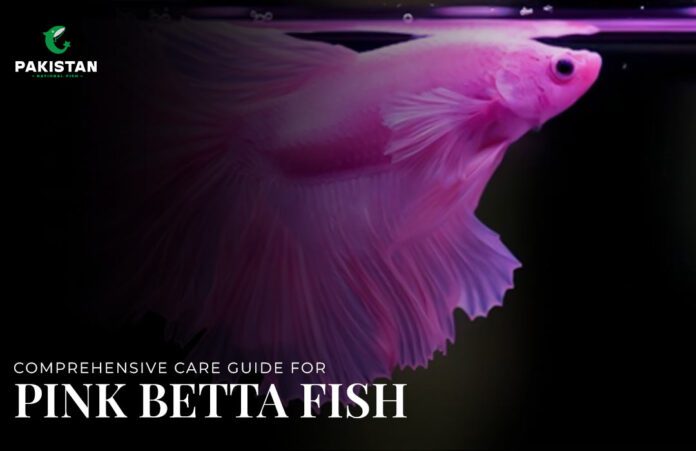Understanding what makes a betta fish happy and healthy is essential to providing proper care for them. To prevent stress and illness, it also entails understanding their sources. You can support a healthy habitat for your betta fish by following the instructions in our thorough care guide. Although bettas typically live between two and four years, they can live up to ten years with the right care.
You’ve found the best resource for betta fish care guidance. This guide is designed to provide you with all the knowledge you require to raise this lovely freshwater fish as a pet. It is native to the warm waters of Southeast Asia.
Why Pink Betta Fish Are Rare?
Pink bettas are extremely rare to come by and won’t be found at your neighbourhood pet store. Certain Bettas, such as Albinos and Cellophane types, can occasionally have a pink look due to their lack of skin pigment, making them practically translucent.
But exactly like Pink Bettas, these variants are extremely uncommon and difficult to locate. Particularly rare are Albino Bettas, which many collectors are doubtful even exist.
Guide for Keeping Pink Betta Fish
1. Aquarium Size And Setup
The following points should be considered for aquarium size and setup:
- Size: Bettas need at least five gallons of water in their fish aquariums. Since they like space, living in a tiny tank for long periods can shorten their lifespan.
- Decor: Rice paddies with hiding spots are the natural habitat of bettas. It is easy to recreate these settings with decorations such as caverns, vegetation, and logs. Seashells, dried coral, painted ornaments, metal objects, and beach sand should all be avoided as they can cut the fish’s fins.
2. Water Quality
The following points should be considered for better water quality:
- Water Temperature: Bettas need warm water that is between 75 and 80 degrees Fahrenheit. Select a heater that has 1 watt of power per litre, or enough power to heat the entire tank.
- Water Purity: Weekly testing is crucial for betta fish’s health, including pH, nitrite, and nitrate levels. Parents should pay attention to pH levels, as they are essential for understanding fish and aquarium health.
- Cycling Water: It’s important to cycle the system for a week before introducing a betta to your aquarium to ensure its health. During this time, bacteria can live on the tank’s surfaces and break down ammonia and nitrite, which, if left unchecked, can kill fish.
3. Aquarium Filter
Take into account the following aspects when selecting a filter for your betta fish tank:
- Aquarium Size: Verify the filter’s package to make sure it is made to fit the dimensions of your aquarium. Choose a filter like the Tetra Whisper Aquarium Power Filter, which is intended for tanks ranging from five to ten gallons, for instance, if your tank is five gallons in size.
- Output Rate: Because bettas dislike a lot of movement in the water, a high output rate that generates strong currents will disturb them. To best fit your fish, use a filter with an adjustable output, which allows you to control the flow.
- Tank Mates and Plants: Select a filter compatible with your betta’s tank mates, such as activated carbon filters, to ensure they don’t remove CO2 and plants for the aquarium. Avoid filters with too much power, as it can harm shrimp and fish.
4. Nutrition:
Nutrition which you can give to your bettas:
- Pellets: pellets are edible to them, making them carnivorous. Seek for pellets, such as Cobalt Aquatics Betta Minis Fish Food, that contain dried meaty ingredients like shrimp or salmon.
- Frozen Whole Foods: Because bettas are omnivores and have a high nutrient content, you can feed them frozen bloodworms or brine shrimp from your neighbourhood fish store.
- Freeze-Dried Foods: To keep bettas from becoming constipated, freeze-dried meals like brine shrimp and bloodworms should be soaked in water for fifteen minutes before serving.
- Live Food: Live foods that are natural and healthy for bettas include brine shrimp, bloodworms, and daphnia, which may be bought from aquarium stores or grown and raised at home.


